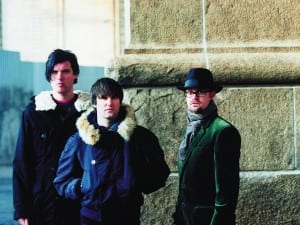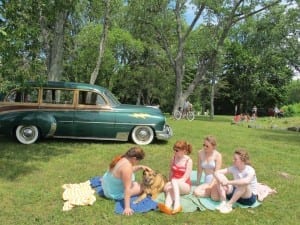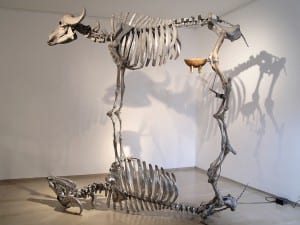A new solo exhibition of Andreas Gursky’s photography is now open at the White Cube, Bermondsey. His first solo show in London in seven years, it encompasses both past projects and new works, continuing his often disorienting examinations of landscape and human impact on our surroundings.
Renowned for his perfected formula in the use of large-format photography for the creation of “otherness”, Gursky’s lens has sought to capture the effects of late capitalism, critically transforming the familiar into the strange by means of scale and perspective. Works more typically perceived as “normal” of the photographer that focus on the “scenic” such as Ocean, (2010) and Bangkok I and II (2011) are juxtaposed against newer works which look more keenly on identifiable figures within popular culture and contemporary art.
Whilst the photographer continues to present elusive images that although recognisable are not easily relatable or indeed passionately emotive, Gursky withholds an ability to capture his audience and manipulate their feeling. Even if this may be by intending to evoke a sense of detachment, apathy or neutrality. The new “super hero” works (SH I – IV, 2014) appear in the exhibition and are the first of a new series of images that are romantic yet dystopic. These scenes of isolated figures are a step outside of the artists’ comfort zone that typically lends towards the more painterly abstract. Incorporating the characters themselves, these iconic figures feature in idealised landscapes shadowed in sour, unhealthy hues of green or pink that reflect a new sense of narrative for the artist. The characters’ quiet despair or unsettling placement conjures a sense of unease, not immediately rationalised.
Lehmbruck I (2013) and Lehmbruck II (2014) depict the distinct Lehmbruck Museum in Duisburg. Its structured design of glass and concrete is shown, exhibiting a selection of iconic works of art within its confines and conveying the Museum as a scene akin to that of a stage set. Carefully placed figures form intriguing viewers within his frames that begin to critique the roles of the “audience”. The compositions are documented from a signature high-angle, used to emphasise a sense of the hierarchical environment of the museum and its role within Art as an industry.
Gursky’s vast shot of a crowd that was previously featured on the cover of the exhibition catalogue for his 2001 exhibition at the Museum of Modern Art –May Day IV (2000) is also on display. As with all of the photographer’s work, his meticulous eye calls for duteous analysis. His employment of scale garners interest and awe, presenting a fragment of a scene unfathomably large it becomes entrancing yet disconcerting. Likewise Kirchentag also explores a German festival, here we are shown a night scene populated with silhouetted figures in dimly lit tents amongst a vast expanse of patchwork tarpaulin. As a viewer, when up close to the works you are able to pinpoint specific details and movements, but stepping back these anchors fade into a blur of activity and form that transforms all previous familiarity into the abstract.
Whilst the photographers’ works are not altogether immediately accessible, either as individual projects or as works intertwined with vaguely relatable themes, the sheer size and detailed craftsmanship of the oeuvre of work on display, demands an un-hurried evaluation. Such lengthy inspection inevitably leads the viewer through Gursky’s pervasive and enduring unique style and treatment of subject matter.
Andreas Gursky until 6 July, White Cube, 144-152 Bermondsey Street, London, SE1 3TQ.
Maresa Harvey
Credits
1. Gursky ® Lager. Authorship/copyright: Andreas Gursky, VG BILD-KUNST, Bonn.





